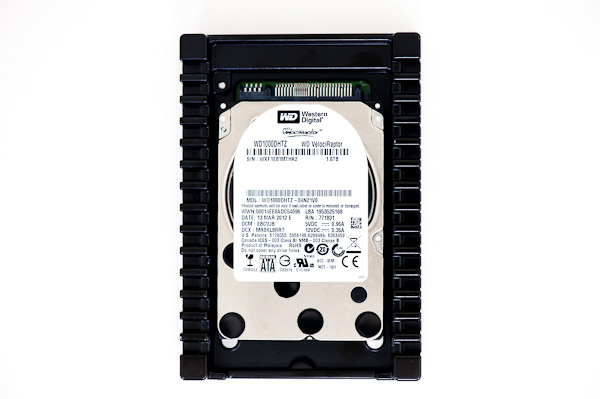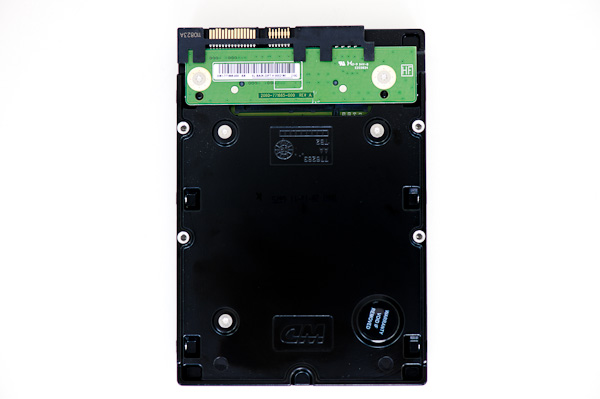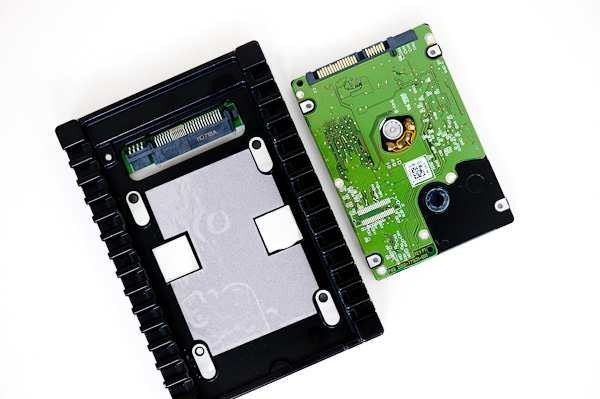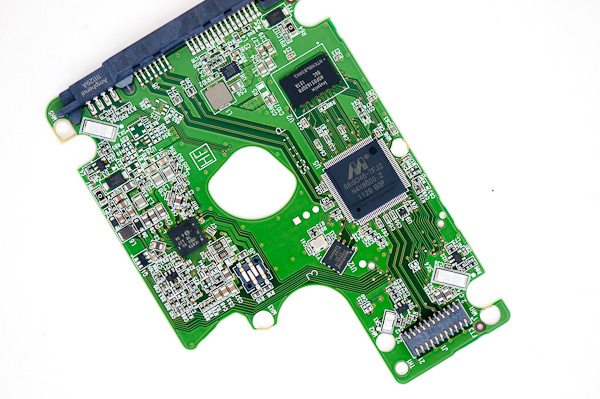Western Digital VelociRaptor 1TB (WD1000DHTZ) Review
by Anand Lal Shimpi on April 16, 2012 8:00 AM EST- Posted in
- Storage
- HDDs
- Western Digital
- VelociRaptor
There was a time when Western Digital's Raptor (and later, the VelociRaptor) was a staple of any high-end desktop build. Rotational media could only deliver better performance by increasing aereal density or spindle speed. In a world dominated by hard drives that focused on the former, WD decided to address both. By shipping the only mainstream (e.g. not SCSI or SAS) 3.5" hard drive with a 10,000 RPM spindle speed, WD guaranteed that if you needed performance, the Raptor line was the way to go.
Two years ago we met the most recent update to the VelociRaptor line: the VR200M. While it raised the bar for the VelociRaptor, WD saw its flagship competing in a new world. SSDs were now more affordable, resulting in even more desktop builds including an SSD. Although the high dollar-per-GB cost associated with SSDs demanded that desktop users adopt a two-drive model (SSD + HDD), for storage of large media files a standard 5400RPM or 7200RPM drive was just fine. After all, moving large files is mostly a sequential operation which plays to the strengths of most consumer drives to begin with.
There are still users who need more storage than an SSD can affordably provide, and who demand speed as well. Although photo and video editing is great on an SSD, a big enough project would have difficulty sharing a 128GB SSD with an OS, applications and other data. For those users who still need high performance storage that's more affordable than an SSD, the VelociRaptor is still worthy of consideration. There's just one problem: Moore's Law is driving the cost of SSDs down, and their capacities up. The shift to solid state storage is inevitable for most, but to remain relevant in the interim the VelociRaptor needed an update.
Today Western Digital is doing just that. This is the new VelociRaptor, available in 250GB, 500GB and 1TB capacities:
| WD VelociRaptor Historical Comparison | |||||
| WD VelociRaptor VR333M | WD VelociRaptor VR200M | WD VelociRaptor VR150M | |||
| Capacity | 1000/500/250GB | 600/450GB | 300/150GB | ||
| Interface | 6Gbps SATA | 6Gbps SATA | 3Gbps SATA | ||
| Advanced Format (4K Sectors) | Y | N | N | ||
| Rotational Speed | 10000 RPM | 10000 RPM | 10000 RPM | ||
| Buffer Size | 64MB | 32MB | 16MB | ||
| Transfer Rate Buffer to Disk | 200 MB/s | 145 MB/s | 128 MB/s | ||
| Platter Density | 333GB | 200GB | 150GB | ||
| Warranty | 5 years | 5 years | 5 years | ||
The basic design remains unchanged. Take a 2.5" drive with platters spinning at 10,000 RPM and pair it with a 3.5" adapter that also acts as a heatsink. Internally the drive gets all of the expected updates. Platter density is now up to 333GB (3 platters for the 1TB drive, 2 for the 500GB drive and 1 for the 250GB). All members of the new VelociRaptor family feature a 64MB DDR3 cache. Combine that with some firmware updates and you've got a recipe for larger capacities and higher performance.
The drive is available today and retails for $319 for the 1TB model, $209 for the 500GB model and $159 for 250GB. These prices are a bit lower than what the VelociRaptor VR200M launched at two years ago (the 500GB is significantly cheaper than the old 450GB launched at).
| WD VelociRaptor Lineup | ||||||
| WD1000DHTZ | WD5000HHTZ | WD2500HHTZ | ||||
| Capacity | 1TB | 500GB | 250GB | |||
| MSRP | $319.99 | $209.99 | $159.99 | |||
| Cost per GB | $0.319 | $0.419 | $0.639 | |||
Compared to standard 3.5" drives, the VelociRaptor is quite expensive. You can buy a 3TB 7200RPM drive at roughly $0.06 per GB, compared to $0.319 per GB for the most cost effective VelociRaptor. Compared to an SSD however, the VRs are still cheaper - although not by a ton if you compare to a low capacity drive. Samsung's SSD 830 (128GB) will cost you $1.36 per GB.














92 Comments
View All Comments
c4v3man - Monday, April 16, 2012 - link
Exactly. Dell offers these drives in their workstation lineup, and I think at one point offered them in their 100-300 series servers. It would be great if Anand would compare the drive to a modern 10K SAS drive, to see how close the two technologies are nowadays.That being said, 600GB 15K SAS drives are under $500 I believe from Dell, so it would only make sense as mass storage.
dananski - Monday, April 16, 2012 - link
I think you're on to something there - SAS drives are getting expensive enough that you start to think about SSDs, so maybe these would fill that big price gap between standard and enterprise drives.Would be pretty good for some other situations too. Games, video editing, music production and image editing need space and sequential speed and this gives both those things at a lower budget than an SSD.
shin0bi272 - Monday, April 16, 2012 - link
What surprised me about this is that they didnt try pushing it to 15k rpm. Some nand would have helped too but as you said in the opening paragraphs... about the only way you can increase speed in a spindle disk is to increase rotational speed or area density. So why not do both? Not sure if they use perpendicular recording on these or not but that would be another way to increase the density and the speed.Of course the down side is that not only is nand still MUCH faster and getting cheaper by the day but, we also have PCM drives coming (hopefully) soon which is 100x faster than flash and lasts for millions of write cycles rather than thousands... Unless its $1000 per gig for the next 10 years who's going to buy a spinning disk when its 10,000X slower than a pcm drive?
Stahn Aileron - Monday, April 16, 2012 - link
Last I recall, bumping up the spindle speed would counteract the areal density increase. Every time I see a spindle speed bump across drives in a similar price bracket, the capacity goes down. I'm guessing it has to do with how quickly the heads can actually read the data under them before its move out from under them. (Perhaps ECC as well.)Still, the last time I saw a 15k RPM drive, the max capacity I think was around 320GB or so. I can't say for certain now as I don't track 15k RPM drives. I don't have the need for enterprise-grade HDDs of that performance. (And to be honest, most storage coverage these days is about SSDs. HDDs don't get into the news much except for the ocassional model revision, if that.)
piroroadkill - Monday, April 16, 2012 - link
I have some 600GB 15K SAS drives right here.Stahn Aileron - Monday, April 16, 2012 - link
Well, like I said, it;s been a while since I bother to look at 15k drives, even in passing, much less recall the numbers. On the other hand, 15k 600GB SAS drives do sound/look familiar. Still, that's the upper end of the capacity spectrum for 15k drives right now, no?shin0bi272 - Tuesday, April 17, 2012 - link
actually I feel you on the not paying attention to 15k drives. That's kinda why I was hoping WD was going to push their Vraptors faster and maybe keep the size around 300-500gb... They are usually so expensive that individuals arent even aware they exist. WD could have changed that but they didnt. They could have made huge changes to the slowly dying spinning disk market... but they didnt. They just increased the size of their current 10krpm drive.Dont get me wrong a 10krpm 1tb drive is cool (especially for the price) but no one needs this drive in their home. A gamer will have an SSD and a plain old drive for storage to keep their files on. A graphic designer might do the same. And people who dont need the performance of an SSD (like lets say my dad) just throw in a 7200rpm drive and call it close.
But yeah no one does reviews of spinning disk anymore because they are becoming obsolete pretty quickly with the falling costs of SSDs (even in the enterprise market) and like I said originally PCM drives.
shin0bi272 - Tuesday, April 17, 2012 - link
http://gizmodo.com/5808353/solid-state-drives-are-...Arnulf - Monday, April 16, 2012 - link
"... the only 3.5" hard drive with a 10,000 RPM spindle speed ..."There have been many real 3.5" drives with 10K (and higher) spindle speed before WD's (Veloci)raptors. It wasn't WD who changed anything, they merely copied what other manufacturers have done years before them.
While others manufacturers went to 15K for performance drives WD is still stuck in 1990s with everything but recording density.
Stahn Aileron - Monday, April 16, 2012 - link
I think Anand means at the consumer level. All 10k and 15k drive other than the VR from WD are aimed solely at enterprise. They are engineered/marketed as such from what little exposure I have of that market space. In all the time I've been into computer news (about a decade), the WD Raptor and VelociRaptor line were/are the only consumer-level 10k RPM drives. All other high performance drives in the consumer space have been 7200RPM drives. I don't ever recall seeing another 10k or 15k drive from any other manufacturer aimed at the consumer space (even if just at the enthusiast level.)